Researchers' Zone:
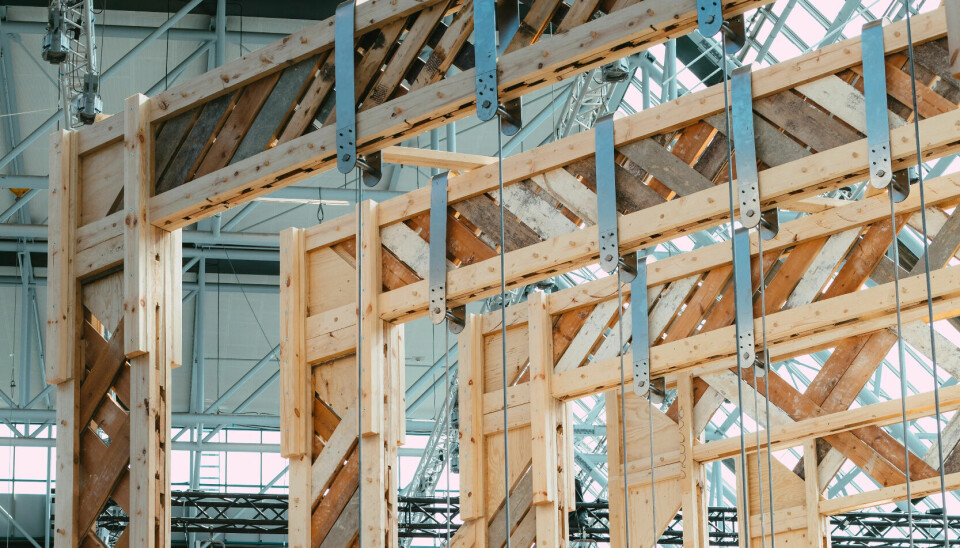
A future built from waste wood?
90 percent of Denmark’s domestic wood consumption is incinerated for energy production. Instead, it could contribute more by starting its life in construction.
In an age where we are seriously evaluating our planetary impact, wood has entered the limelight as a material with a strong contribution to a better future.
Buildings, furniture, packaging, warm showers, and heating are all services that can derive from wood.
And with many sectors’ eyes on the forest to aid their transition to better practices - one thing is for certain, the demand for wood is on the rise.
The future of forests is uncertain. Concerns not only relate to increased demand, but also the fragility of ecosystems in a changing climate.
Therefore, we’re in need of new methods for increasing the lifetime of the wood that we already have.
Wood is not just wood
Wood’s high energy content has always made it an attractive fuel. Today, around 50 percent of the world’s annual log harvest is incinerated.
In an effort to decarbonise, Denmark has significantly increased its dependency on wood for fuel, burning 90 percent of its domestic consumption (both imports and national production).
Perhaps paradoxical, considering wood emits significantly more CO2 than coal, we could ask: isn’t this wood better used elsewhere?
Timber construction is on the rise in Denmark. An ancient material practice, recontextualised in contemporary building culture, is replacing steel and concrete in load bearing structures.
Denmark’s tallest timber building, TRÆ, designed by Lendager Architects is currently under construction in Aarhus.
This has followed other recent examples, such as the ‘Hans Christian Andersen’s House’ in Odense.
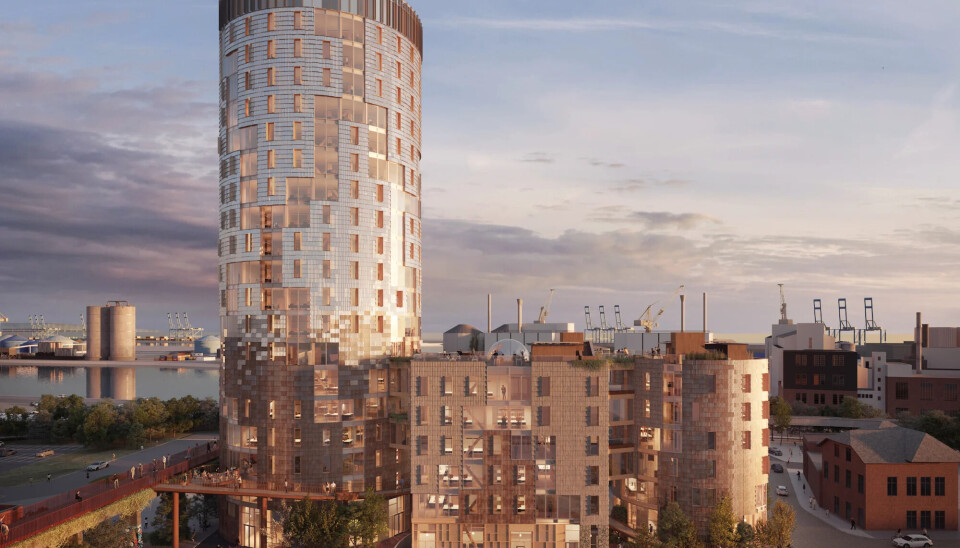
The wood from the trees
We’re well on our way to understanding how we can build with wood, but just how much of it might be available for buildings?
Wood comes in many forms, trees, logs, planks, and in many species, each with their own affordances.
Making forests into lumber is lossy, with only around 20 percent of a tree making it into a building after processing.
The remaining 80 percent is typically used for short term applications, demonstrating that wood can occupy many durations.
However, we’re in need of longer timber lifetimes if we’re to properly balance with the required regeneration cycles of forests.
After their first use in a building, timber columns, beams, floors, stud walls, and cladding are typically burned for energy recovery. By this point, they have attracted a number of new traits.
Contaminants such as paints, nails, and screws, as well as geometric deformations, as wood – a natural material – twists and turns in response to its environment.
Today, these defects are at the core of this post-consumer material being rejected from a life in future construction, causing it to only live a short life.
Our research aims to reverse this thinking and identify new ways for including undervalued wood in load bearing structures.
Designing with deficiencies
Together with the Royal Danish Academy and the architectural firm Lendager, I investigate how discarded wood might be valued in an architectural context.
The aim is to improve the effectiveness of wood use, by giving a high-quality material an extended life.
We take the material traits that are regarded as defects and develop methods for designing with them in new structures.
In this sense, we use the material of which we have the lowest expectations in one of the most demanding contexts.
A key principle for achieving this, is to reduce the amount of material processing. This minimal processing keeps as much of the material in use as possible, and preserves the unique expression of secondary timber.

Prototyping waste wood construction
The research investigation is developed through a series of prototypes, each of which explores the potential of secondary material in construction types that we already use today.
Beams, columns, and slabs are all systems that are a part of today’s construction, and by creating components from waste that match the performance of new materials, we can interface new material flows with existing design and construction methods.
Working in close correspondence with inherited material, the prototypes aim to preserve the identity of timber elements.
All the characteristics that have emerged from timber’s previous lives are retained by adopting a minimal-processing approach.
Furthermore, by reducing material processing, we can demonstrate high material yields; as much as 80 percent of material is retained as it passes from waste stream into a new component typology.
This is reported in our paper ‘Making a Beam Social: In search of a localised production paradigm’ that is due to be published later this year in Springer Nature’s special edition ‘Design for Rethinking Resources.
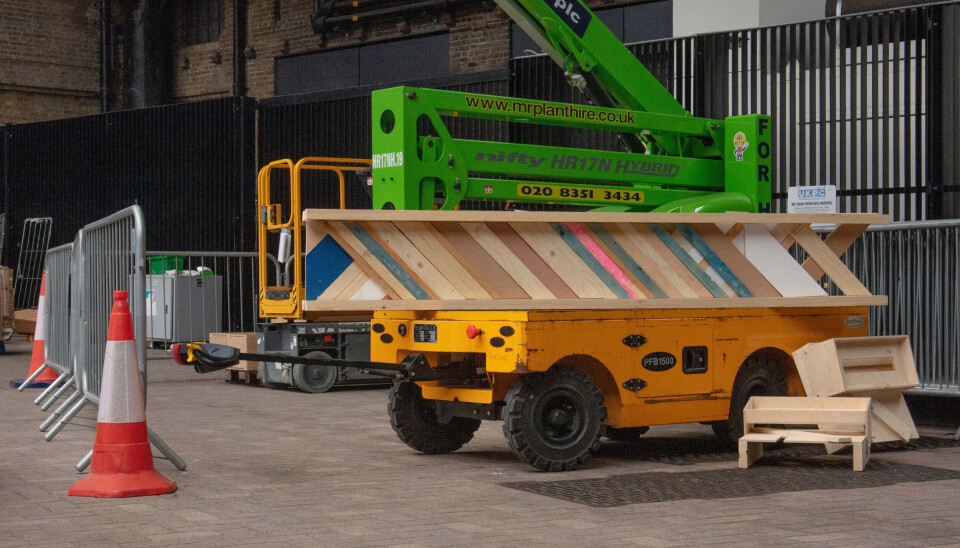
Wood ReFramed
One of our projects was exhibited during the World Congress of Architects (UIA) 2023, that this year was hosted in Copenhagen.
The project, Wood ReFramed, was a chance to test our successful prototypes at scale, and in collaboration with industry actors.
Conceived of as a building segment, it aimed to both demonstrate how waste timber can be applied at pavilion scale, and also in a construction type for multi-storey building.
Within these, shorter lengths of timber are added in varying amounts, corresponding to the load of a suspended seating area, constructed from reclaimed glulam.
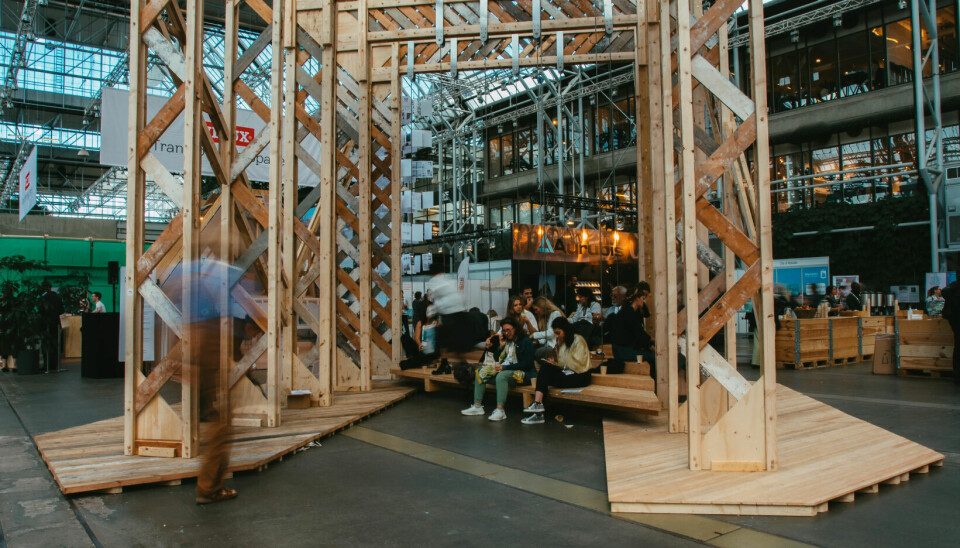
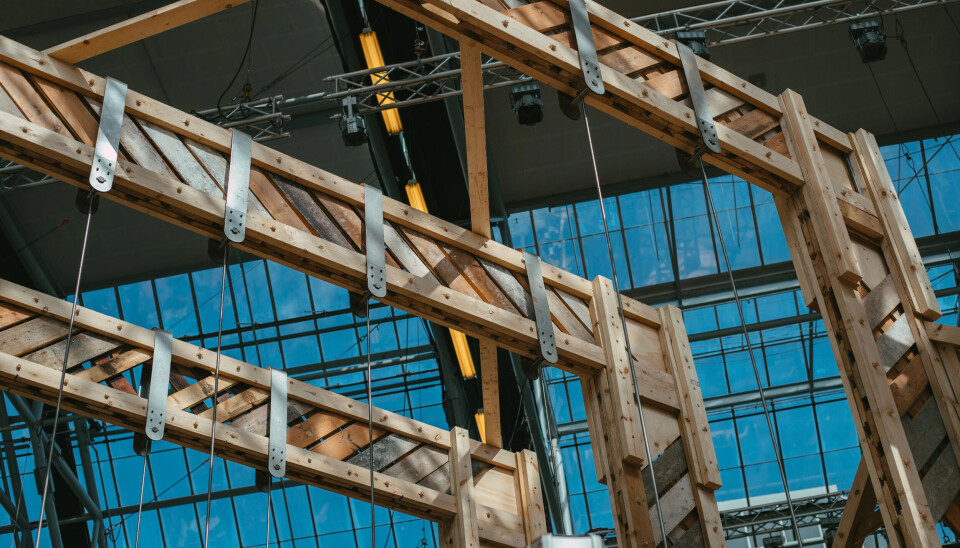
Short supply chains
This space was populated by congress attendees, who’s weight was distributed evenly amongst the many small individual pieces of reclaimed timber.
During the project’s development, we worked closely with a demolition contractor to create a material search criterion for intercepting wood that would otherwise be destined for incineration so it could be used for the load bearing components instead.
The project was also a chance to prototype local production paradigms. Compared to sourcing virgin timber from Northern Sweden or Austria, which is typically in today’s timber practices, all the wood in the project was sourced in the Copenhagen area.
Just as the beam and column components are designed to interface with existing building systems, the components can employ fabrication techniques that are relevant to local contexts.
In Wood ReFramed, the components are hand crafted, but they could equally be introduced to more automated production contexts, depending on the availability of knowledge and fabrication infrastructure.
The future of timber construction
In a time where wood is becoming increasingly important for securing a viable future, timber construction practices have an important role to play in rethinking the value of materials.
Through more nuanced relationships between material flows, building cultures and the people who make architecture, we can develop a more effective utilisation of existing materials.
And in turn, apply resources where they can perform, alleviate pressures on forest ecosystems, and work against premature endings of material lifetimes.
This research intends to increase the feasibility of integrating unconventional material streams in construction contexts of the near future.
This article is a result of a collaboration between Videnskab.dk and the research network 'Circular Built Environment Network', curated by BLOXHUB.




